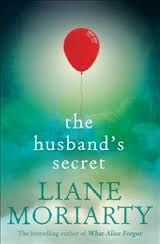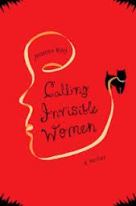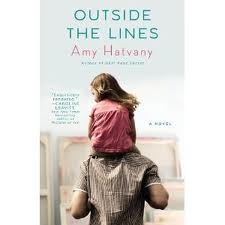The Husband’s Secret by Liane Moriarty (Aug 2013)
July 3, 2013 1 Comment
 I’m not much on being secretive. I pretty much have to work hard to keep my thoughts appropriately stuffed away. But as I came to the end of Moriarty’s newest novel (after What Alice Forgot), I kept going back and forth on the question “to tell or not to tell?”. I still don’t know the answer. It’s not possible to blithely proclaim “always tell the truth”, unless you’re a total black and white person, in which case, you probably don’t like the moral complexities of good fiction. In The Husband’s Secret, there are actually multiple characters who hold secrets. Lives are protected, and destroyed, by these secrets. The story revolves around 3 women and their families in Melbourne and Sydney, Australia. Most of the story takes place in the present, while at times reverting back to the 80s. It took a little effort at first to get the characters and families straight (though not like trying to sort through Game of Thrones families and locations and loyalties, so don’t worry), but soon enough, I was totally engrossed in each character’s life. Moriarty’s ability to flesh out characters is extraordinary, her dialog impeccable. This is a fabulous novel that won’t let you go until you’ve read the last page, and even then, it won’t be finished with you. You’ll keep mulling over the quandaries days later: would I have told? Would I have kept the secret? Could I have lived with the consequences of either choice?
I’m not much on being secretive. I pretty much have to work hard to keep my thoughts appropriately stuffed away. But as I came to the end of Moriarty’s newest novel (after What Alice Forgot), I kept going back and forth on the question “to tell or not to tell?”. I still don’t know the answer. It’s not possible to blithely proclaim “always tell the truth”, unless you’re a total black and white person, in which case, you probably don’t like the moral complexities of good fiction. In The Husband’s Secret, there are actually multiple characters who hold secrets. Lives are protected, and destroyed, by these secrets. The story revolves around 3 women and their families in Melbourne and Sydney, Australia. Most of the story takes place in the present, while at times reverting back to the 80s. It took a little effort at first to get the characters and families straight (though not like trying to sort through Game of Thrones families and locations and loyalties, so don’t worry), but soon enough, I was totally engrossed in each character’s life. Moriarty’s ability to flesh out characters is extraordinary, her dialog impeccable. This is a fabulous novel that won’t let you go until you’ve read the last page, and even then, it won’t be finished with you. You’ll keep mulling over the quandaries days later: would I have told? Would I have kept the secret? Could I have lived with the consequences of either choice?




